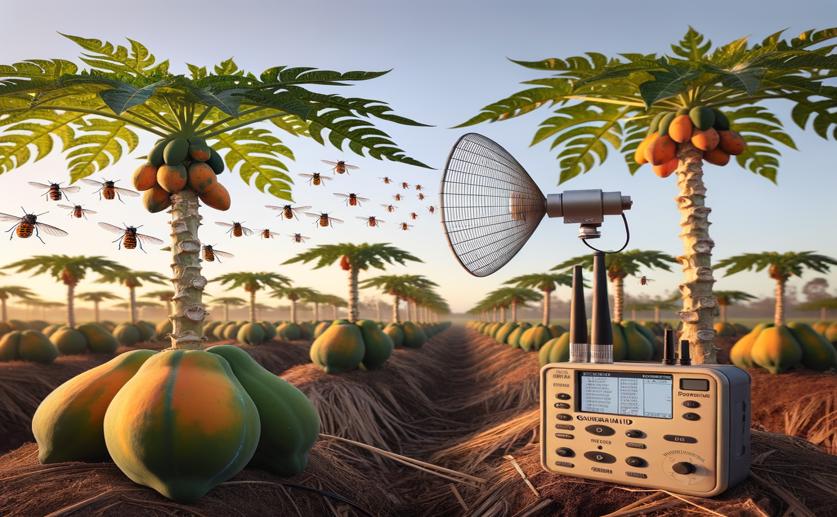
Using Harmonic Radar to Track Queensland Fruit Flies in Papaya Fields
Jenn Hoskins
2nd August, 2024

Image Source: Natural Science News, 2024
Key Findings
- Researchers from Eastern Mennonite University tracked wild male Queensland fruit flies (Qflies) in papaya fields using harmonic radar technology
- Qflies showed more complex movement patterns than predicted by simple or correlated random walk models, indicating varied behaviors at different spatial scales
- The study's findings can improve pest management strategies by providing detailed data on Qfly movement patterns and behaviors
AgricultureEnvironmentAnimal Science
References
Main Study
1) Tracking and modeling the movement of Queensland fruit flies, Bactrocera tryoni, using harmonic radar in papaya fields.
Published 30th July, 2024
https://doi.org/10.1038/s41598-024-67372-4
Related Studies
2) Harmonic radar tracking of individual melon flies, Zeugodacus cucurbitae, in Hawaii: Determining movement parameters in cage and field settings.
3) An Innovative Harmonic Radar to Track Flying Insects: the Case of Vespa velutina.
4) Simulation-Based Investigation of the Performance of Delimiting Trapping Surveys for Insect Pests.



 13th July, 2024 | Greg Howard
13th July, 2024 | Greg Howard